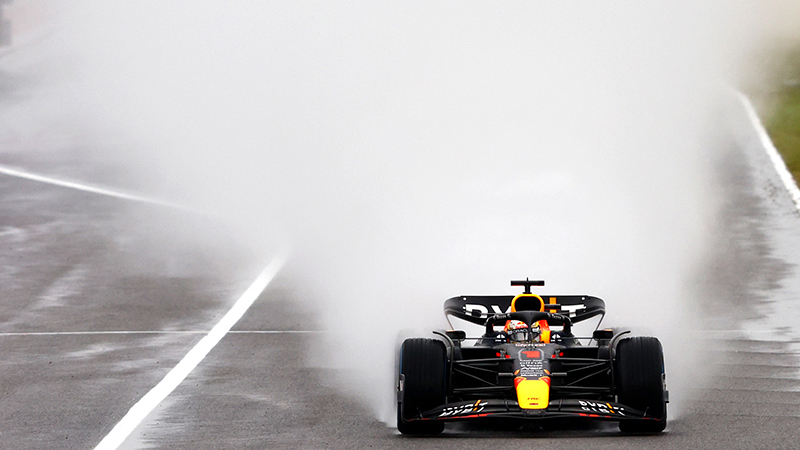
Oracle Red Bull Racing’s Max Verstappen clinched the Formula One Drivers’ Championship on October 9, 2022, after a dramatic showdown in heavy rain on the Suzuka Circuit at the Japanese Grand Prix. He outscored Ferrari’s Charles Leclerc and Red Bull Racing teammate Sergio Pérez to earn back-to-back driver’s titles with four races still left in the 2022 season.
Armed with his Red Bull RB18 racecar, Verstappen has won 12 of 18 races so far this season, taking his career victory tally to 32.
Verstappen’s wins are a testament to his enormous talent as a driver, and also to the team that works behind the scenes to put him in the best position to win. That team includes a small group of strategists who use Oracle Cloud Infrastructure (OCI) to run simulations of race scenarios—not only before the race, but also in real time as circumstances unfold, such as rain, safety cars, and lead changes.
F1 unveiled an entirely new race car design for this season, with changes meant to make the competition more exciting through more overtaking and closer racing. Because the RB18 is an entirely new car on the track, the engineering and strategy teams had little historical performance data on the cars to review, setting up a formidable data challenge from the start of the season.

at Suzuka, Japan, to take back-to-back F1 championships.
“Data has transformed Formula One massively over the years,” says Will Courtenay, head of race strategy for Oracle Red Bull Racing. “You go back 10 or 15 years ago, and there was very little data available to us at all. Now we have a huge number of sensors on the car, and the timing data and the GPS data on the car, and all that’s fed into our strategy to help us understand how the car is performing and how to get the best performance out of the car.”
On race days, Oracle Red Bull Racing’s strategy operations kick into overdrive, testing billions of scenarios and combinations using Monte Carlo simulations running on OCI to inform critical real-time race decisions. The Oracle Red Bull Racing strategists were able to run 25% more simulations this season thanks to OCI’s low cost and high performance. The team was able to containerize its simulation application using Oracle Container Engine for Kubernetes, and then run it efficiently on OCI Arm-based servers.
In a season full of highlights, the Hungarian Grand Prix July 31 stands out as a test of Verstappen’s superb driving and racing instincts, as well as the data-backed skills of Oracle Red Bull Racing’s strategist team, which is led by either Courtenay or principal strategy engineer Hannah Schmitz on the racetrack’s pit wall. The strategists help the team make decisions such as when to pit and which tires to use at different points of the race.
“This season, one of the biggest highs on the strategy side has to be Hungary,” says Courtenay. “We had a problem with Max in qualifying, and he started 10th on the grid. But due to a combination of Max driving a fantastic race, the car having superb performance, and some good strategy, we managed to overtake and undercut our way back and ended up winning the race. So, for us that was a huge moment.”
Following a historic showdown with Lewis Hamilton last season, in which Verstappen earned the championship in the season’s final Grand Prix, Verstappen’s 2022 campaign clinched much earlier, but each race’s outcome was closely contested. And there’s plenty of racing excitement left, with the team Constructor Championship still to be decided before the season wraps up in Abu Dhabi in November. Pérez has had his best F1 season as well, including his recent win at the Singapore Grand Prix on October 2.
For race strategists, in fact, one of the many complexities they need to assess pre-race and in real time during a race is how their two drivers work together to maximize the team benefit, says Schmitz. “For a strategist, if you can use your drivers to help the team, not just as individuals, then that’s a lot more powerful,” she says.
